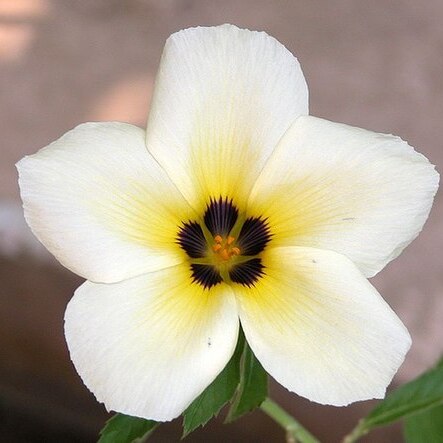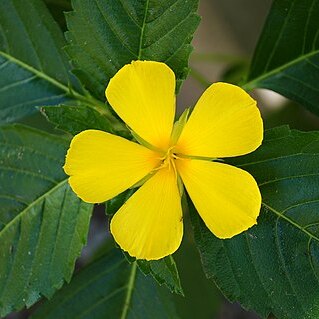Annual or perennial herbs, shrubs or small trees (not in Australia), with simple or stellate (not in Australia) hairs. Stipules present or absent. Leaves alternate, simple, dentate to serrate, usually with 2 glands at base of lamina margin or apex of petiole. Inflorescences axillary cymes or racemes (not in Australia), often reduced to solitary flowers; peduncle free (not in Australia) or adnate to petiole; prophylls persistent. Flowers distylous, homostylous or heterostylous (not in Australia). Sepals connate. Petals sometimes with a dark basal patch. Corona absent. Stamens 5, alternating with petals; filaments shortly attached at base or adnate along margins of hypanthium beyond its middle forming nectar-pockets. Styles 3; ovary sessile, 3-carpellate. Capsules granulose, tuberculate, rugose or verrucose, rarely smooth (not in Australia). Seeds arillate, reticulate.
Erect or ascending perennial (or annual) herbs, (shrubs or trees), invested with simple (or stellate) hairs. Leaves often with 2 marginal basal glands, above the base dentate-serrate, distinctly gland-dotted beneath. Flowers solitary in the leaf-axils, heterodistylous or homostylous; pedicel adnate to the petiole, with 2 apical bracteoles. Calyx-tube often with thickenings above the insertion-point of the stamens, segments often very acute. Petals on a short hairy claw, obovate, caducous after anthesis. Stamens inserted above base of calyx-tube, margins of the filaments cohering with base of calyx-tube. Ovary globose-ovoid; stigmas multifid. Capsule broadly ovoid, obtuse, verruculose, 3-valved down to near the base; valves with recurved tops. Seeds globular to oblong, often curved, with a raised scalariform reticulation and a unilateral aril.


